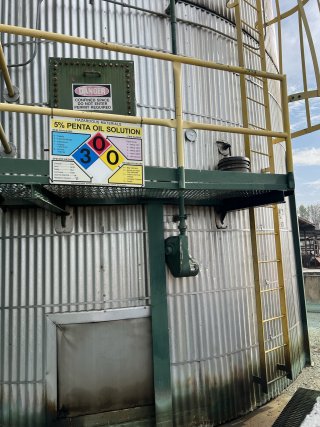J.H. Baxter Wood Treating Facility Cleanup Investigation
EPA is working with the Oregon Department of Environmental Quality to determine the extent of contamination on and around the J.H. Baxter & Co. wood treating facility in Eugene, Oregon.
Proposed Superfund listing
Why EPA is proposing this site to the NPL
The Comprehensive Environmental Response, Compensation and Liability Act, or Superfund, grants EPA the authority to clean up contaminated sites that are determined to pose a risk to people’s health and/or the environment.
The National Priorities List (NPL) is a prioritized list of sites that warrant further investigation and may require cleanup, and also ensures funding is available, if needed, to conduct cleanup.
The state of Oregon referred the site to EPA because of the contamination present at the facility. Other federal and state cleanup programs were evaluated, but no other program has the appropriate authorities or resources to address the site at this time. EPA received a letter of support for placing this site on the NPL from the state of Oregon.
Listing a site on the NPL is a two-step process: first, a site is proposed to the NPL and, following a public comment period, a decision is made whether to place the site on the NPL.
Additional information about the proposed listing is available on EPA's website at Current NPL Updates: New Proposed NPL Sites and New NPL Sites.
For questions about the proposed listing, please contact Brandon Perkins, NPL Coordinator, 206-553-6396, [email protected].
Current work

Residential soil sampling
EPA has been supporting Oregon DEQ in conducting a residential soil study to determine the number of residential properties affected by soil contamination. The data will provide information about potential contamination from past facility operations and identify areas of concern in the residential neighborhood directly to the north of the facility.
When will I get my sample results?
To date, EPA has sampled 52 properties for dioxin contamination. EPA should receive the results of these efforts by mid-July, then they will be made available to Oregon DEQ. DEQ will then share the results with all the property owners and tenants.
Oregon DEQ is working closely with EPA, as well as the City of Eugene, Lane Regional Air Protection Agency, Oregon Health Authority, Active Bethel Citizens, and Beyond Toxics to share information about the residential soil sampling efforts.
Facility and tank evaluation
EPA is continuing to investigate the J.H. Baxter facility including all tanks, storage areas, silos, totes, and other areas where chemicals were, or continue to be, stored or used. We are using the data to develop a strategy for handling and removing the chemicals from the site.
Environmental sampling to support a potential Superfund site designation
EPA collected soil, sediment, and water samples in May 2023 from both the facility and the surrounding areas. These samples will determine the scope, severity, environmental and potential public health impacts of chemicals that have migrated from the site and from air pollution from facility operations.
The findings of these samples will help EPA determine the best approach to addressing the environmental and public health risks, including whether the site would qualify for proposal to the Superfund National Priorities List.
Site background
From 1943 to 2022, J.H. Baxter treated wood products at their West Eugene, Oregon facility. Environmental contamination from chemicals that were used to treat wood products, such as creosote and pentachlorophenol (also known as "penta" or PCP), have contaminated the soil and groundwater and are an ongoing concern for surrounding neighborhoods.
J.H. Baxter stopped operations at the site in January 2022, but the chemicals remain in tanks and environmental contamination has not been addressed.
Contacts
- Randy Nattis ([email protected]), 503-628-9419, EPA Project Manager.
- Rafi Ronquillo ([email protected]), 206-638-6305, EPA Community Involvement Coordinator.
- Alice Corcoran ([email protected]), 206-473-2725, EPA Community Involvement Coordinator.
Additional information about this project is available on the Oregon Department of Environmental Quality’s website.
